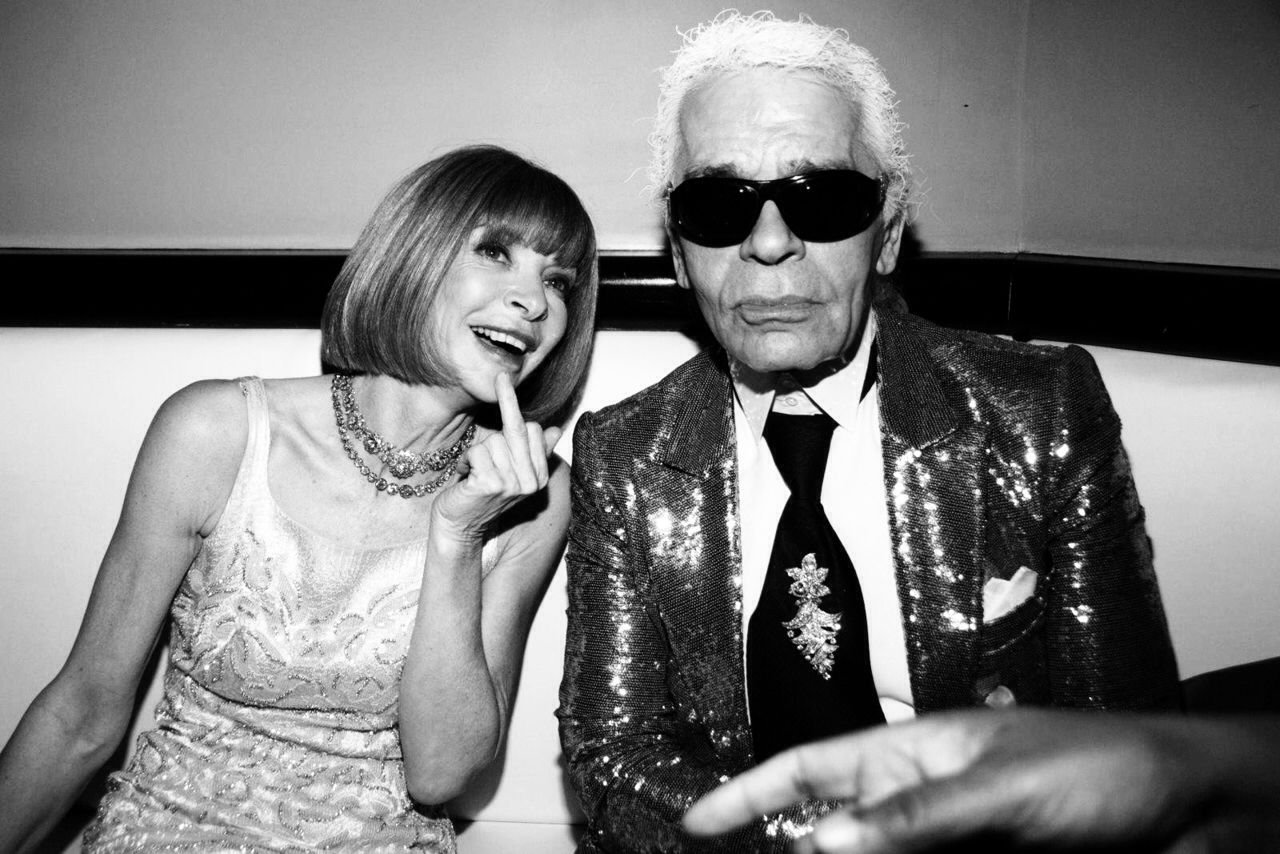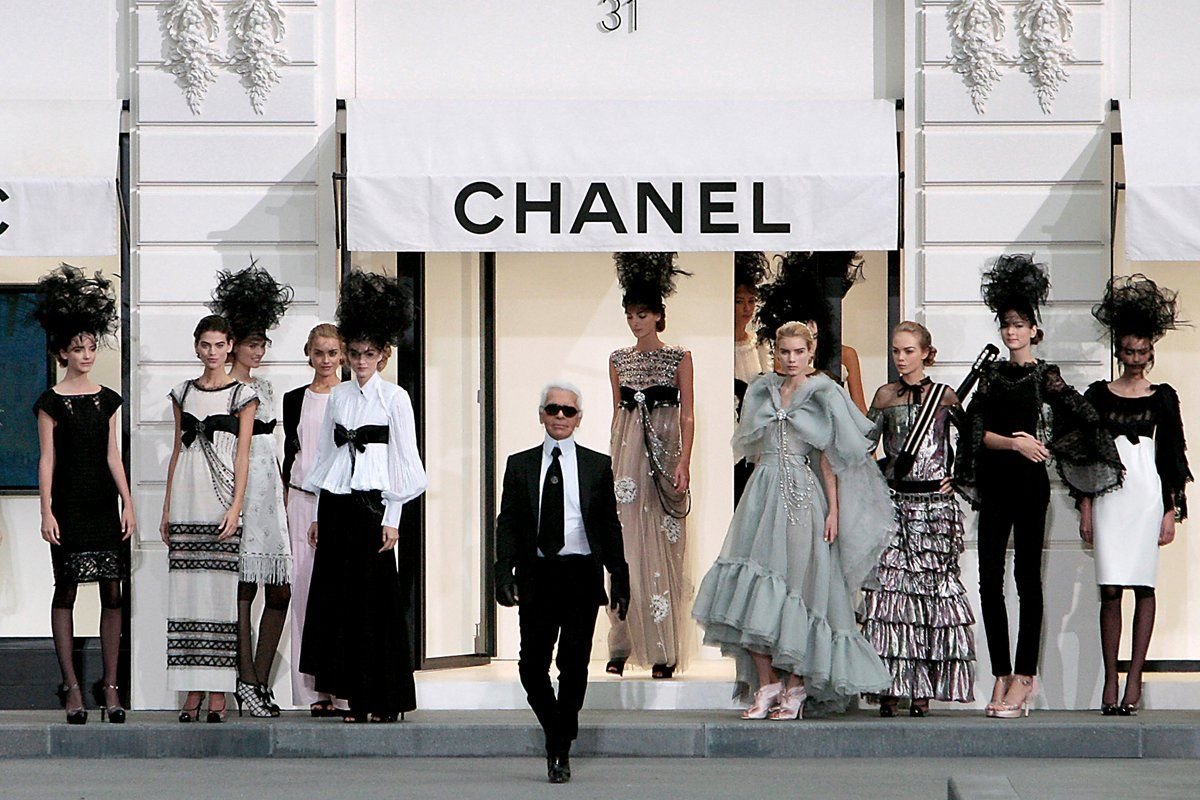The Legacy of Karl Lagerfeld
The Legacy of Karl Lagerfeld
By: Emma Greene
A man of many titles, Karl Lagerfeld was best known as the creative director of both Chanel and Fendi during his long and illustrious career. His work in the fashion industry will be honored on May 1, 2023 at the Met Gala, themed “Karl Lagerfeld: A Line of Beauty.”
The 2023 Met Gala will be chaired by Anna Wintour and co-chaired by Michaela Coel, Penelope Cruz, Roger Federer, and Dua Lipa.
The Metropolitan Museum of Art will debut its annual costume exhibit by the same name on May 5. The exhibit will include 150 looks that showcase the legend’s aesthetic and conceptual evolution throughout his seven decades as an industry powerhouse. Showcased in the museum’s Tisch Galleries, the exhibit will close on July 16.
Karl Otto Lagerfeld was born on September 10, 1933 in Hamburg, Germany. At 14, he and his family moved to Paris, where he would learn to sketch and develop his eye for design.
Lagerfeld’s fashion career began “somewhat accidentally,” according to his website, as he originally aspired to become a fashion illustrator. In 1954, Lagerfeld submitted a sketch of a coat to the International Wool Association’s competition. To his surprise, at only twenty-one years old, he won in the coat category.
Press following the award brought Lagerfeld to the attention of Pierre Balmain, to whom he served as an assistant for three years, from 1954-1957. In 1957, Lagerfeld accepted a position as Art Director at Jean Patou, a Parisian house, where he contributed to ten haute couture collections.
Lagerfeld’s career skyrocketed when he became a freelance designer in the early 1960s. Immediately following his then unconventional career change, he worked at Tiziani, a Rome-based house that is responsible for several of Elizabeth Taylor’s iconic red carpet and on-screen looks.
His time at Chloé began in 1964. There, he would become lead creative in 1966. Lagerfeld designed the brand’s collections from 1964 to 1983 and later from 1992 to 1997.
The success of his collaboration with Curiel, another Italian house, led to Lagerfeld’s first collection with Fendi. At Fendi, Lagerfeld designed more than 100 collections.
Lagerfeld’s time as creative director at Fendi began in 1965, just eleven years after he accepted his assistant position with Balmain. Now a top player in the European fashion scene, Lagerfeld was fluent in German, French, Italian, and English.
When Lagerfeld assumed the position of creative director at Chanel in 1982, the brand was in desperate need of new life. Lagerfeld embraced the challenge. He turned to Coco Chanel’s early designs for inspiration, updating Chanel’s tweed and classic skirt-suit styles. He was also the mastermind behind the brand’s iconic double C logo.
Two years later, in 1984, Lagerfeld founded his namesake line. The brand’s designs were inspired by “intellectual sexiness,” according to Lagerfeld. The Karl Lagerfeld brand was sold to the Tommy Hilfiger Group in 2005, but Lagerfeld remained highly involved in its creative processes after the sale.
On design, Lagerfeld once said, “I design like I breathe, you don’t ask to breathe; it just happens.”
However, designing was not all he did. Lagerfeld was also a successful photographer and publisher. He shot his first campaign as a photographer in 1987 and was enthralled by the art. He was known to take only a few photos during shoots, as his visions were so strong and specific that they only required a couple of takes. Throughout his career, Lagerfeld built a diverse portfolio, including more than seven methods of image-making. In 1999, twelve years after he shot his first photography campaign, Lagerfeld opened 7L, a photography studio and bookshop in Paris.
Lagerfeld was known for owning over 300,000 books. He enjoyed reading about a myriad of topics from geography to music, but his combination bookstore and studio specialized in books on visuals and photography.
Lagerfeld remained the creative director of both Chanel and Fendi until his passing on February 19, 2019. Lagerfeld’s impact on these brands and the fashion industry as a whole will never be forgotten. His legacy will live on through his innovative designs and will continue to inspire the fashion industry long after this year’s Met Gala.
For more fashion and Met Gala content, continue reading Square Magazine. Follow us on Instagram for updates and exclusive content.
All images belong to their respective owners.



